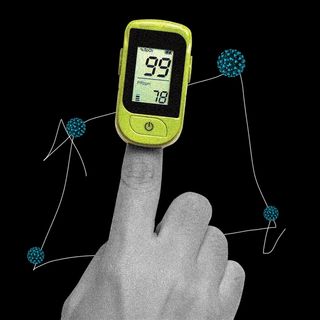We all know or have used the 5-second rule at some point in our lives, as an excuse to override clumsiness or a last-ditch effort to save edible, dropped food. But in a time when we have all become obsessed with surfaces amid the coronavirus pandemic — where does the virus linger? For how long does it stay? What should we touch and not touch? — is the 5-second rule still valid? More importantly, was it ever?
“Bacteria can contaminate instantaneously,” food scientist at Rutgers University’s School of Environmental and Biological Sciences, Donald Schaffner said in a statement, commenting on his experiment testing the 5-second rule. He, along with his graduate student Robyn Miranda, tested different scenarios, including four different surfaces (wood, carpet, ceramic tole and stainless steel) and four foods (bread and butter, bread, gummy candy and watermelon), left for a variety of different times (less than one second, five, 30, and 300 seconds).
Moisture played a significant rule in determining how, and how much, food got contaminated if left on the floor, the study, published in Applied and Environmental Microbiology, found. Watermelon attracted the most bacteria, followed by bread and butter (face down on the butter), then bread and then gummy candy. The moister the food, the easier it was for bacteria to latch on, they found. The duo also found the four surfaces facilitated this transfer of bacteria differently, with tile and steel aiding contamination the most, and carpet the least.
Related on The Swaddle:
The ‘Bliss Point’ Is How Companies Ensure You Can’t Have Just One French Fry
Their study shows time is not the only factor that determines if a food gets contaminated — although, they did find the longer the food stays on any surface, the more bacteria it amasses. So, they didn’t necessarily disprove the 5-second rule. Five seconds is clearly better than say, 30 seconds, but the contamination also depends on the type of food that’s dropped, and the type of surface it’s dropped on.
That brings us to another pressing question — is the 5-second rule harmful? Five seconds may not be as bad as 30, but is it still enough to contaminate food and make it inedible? “The risk of getting sick from eating food dropped on the floor is very low, since most surfaces do not harbor pathogenic bacteria — unless you’re in an environment likely to have harmful bacteria, like a hospital,” Paul Dawson, food scientist and author of another study testing the 5-second rule (that came to similar conclusions as the more recent Rutgers experiment), told Vox.
So, even if most surfaces are full of bacteria, and those bacteria can easily latch on to dropped food, even instantaneously, most are not harmful. So, those who swear by the 5-second rule may not have been off-base at all. That is, until the coronavirus pandemic.
So, yes, the coronavirus pandemic has made us more paranoid, and justifiably so. But do we need to rethink the 5-second rule? If it’s a generally clean environment, like a home, most likely the rule can still stand. If it’s a hospital, head straight for the trash can.




